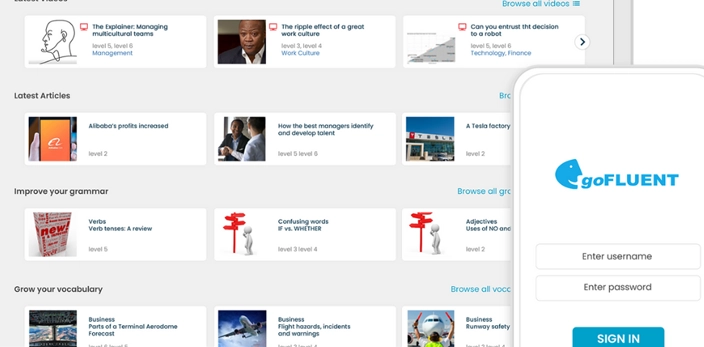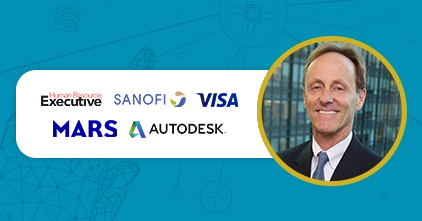In upskilling and reskilling, learning technology trends are essential to learners’ overall training and development experience. In this article, we discuss the edtech trends you should adopt in your L&D strategy.

The current situation in the world demands for more employees across different organizations and industries to upskill and reskill for more internal mobility within workplaces globally. In line with this, learning technologies are crucial in ensuring that internal mobility and reskilling processes are effective and efficient.
With changes in work dynamics within companies, having sufficient talent that meets the demands of evolving job roles and cultivating current talent pools must be kept in mind. At the same time, considering emerging skills while creating an elevated L&D program supported by educational technologies can hasten skills development within your organization.
With this, here are the most trending learning technologies in the L&D industry that can help your employees upskill and reskill this year.
Learning experience platforms (LXP) and integrations
LMS (Learning Management System) isn’t a breakthrough nowadays. Actually, it has been the standard tool used in training for years already. On one hand, learning experience platforms (LXPs) are becoming more and more popular in the field of learning technologies and training and development. You can think of it as next generation LMSs that go beyond just administering and hosting training courses.
As a refresher, LXPs are used in L&D to be able to provide learners with interactive training experiences that can tremendously upskill and reskill them. Compared to LMS, LXP promotes a more learner-driven approach rather than an administrator-driven way of learning, allowing users the freedom to choose their own manner of learning and how they arrive at their own training goals.
LXPs have a lot of amazing features including its ability to accommodate greater content types such as podcasts, links to useful websites, videos, articles, and even user-generated content from your learners. More so, LXPs are also built in a way that encourages continuous learning that is controlled by employees wherein they can learn at their own pace and in their points of need, promoting more learning in the flow of work.
Interestingly, LXPs also allow learners to earn badges and certificates through various skills assessments. One advantage of this is that learners and their managers get to have valuable milestones to measure and evaluate progress, creating a more data-driven culture when it comes to L&D.
Learning system integrations enable your LMS or LXP to house particular training solutions (e.g. language training) that increase its accessibility for learners. Not only that, but there are a lot more perks to having your training solutions integrated into your company’s learning system such as:
- Learners can easily access training content and services through single sign on (SSO)
- Learning leaders no longer need to worry about a lot of manual work because learner registration are done instantly
- Accessibility can result to increased traffic in the LMS or LXP
- Training reports and assessments are automatically sent to L&D and HR professionals which they can view on-demand
- Training managers can easily manage learner data and analytics
Also, integrations make it easier for your organization to deploy training at scale more seamlessly. For instance, a huge global company needs to centralize training for employees. Here, integrations play a huge part in facilitating faster administration of training data and reports which can easily be aligned with KPIs, more accessibility of training courses for employees to instantly train in the flow of work, and more efficient management of learning dashboards for learning leaders to create their own business cases for a particular training program.
Virtual classroom training
The sudden shift to digital learning has resulted in the move of organizations to using virtual classrooms as avenues for learning and upskilling. In fact, 97% of organizations are now using virtual classrooms in their L&D based on a report by the Fosway Group. Also, in March 2020, Dell was one of the huge companies to shift from a traditional classroom training set-up to a 100% virtual classroom-based learning for their employees which enabled them to adapt to the fast-changing conditions of today’s workplace.
And rightly so! There are a lot of advantages to having virtual classrooms when it comes to training and development such as:
- Learners can access their lessons and courses anywhere and anytime
- There is a perfect mix of freedom and structure when it comes to learning
- They can receive immediate feedback on tests and assessments
- They can sharpen their digital skills more
For example, goFLUENT’s eLearning platform allows learners to attend virtual classes where they can study different language lessons relevant to business and leadership together with other learners from different countries. Here, virtual classrooms are used to promote collaboration and interaction which are essential for learning new languages.
More so, as another example, Group Lessons by goFLUENT also use virtual classrooms wherein learners within the same company can study specific lessons which makes their training more relevant since they all share the same context, levels, and backgrounds. Virtual classroom, powered by Microsoft Teams’s video conferencing capabilities, is also used to further add human interaction in digital learning which augments the learning experience offered by traditional in-person training.

Adaptive learning
As the current workplace situation today demands for more personalized learning in virtual classrooms and using other digital training tools, it’s best to revisit how adaptive learning has become more relevant now. And there’s no better way to implement this than through digital learning. In fact, digital learning enables more personalization in L&D.
As adaptive learning harnesses the power of machine learning, learners are encouraged to upskill and reskill themselves even without the supervision and guidance of trainers and instructors. In fact, one principle of adult learning is that adults have the freedom to learn in their own way. And this is one of the things that adaptive learning addresses.
For instance, in the goFLUENT learning platform, it’s required for learners to take an initial assessment which involves their language skill levels, industries where they belong, and of course, their own learning preferences.
These factors are taken into account to make language training more tailored and targeted depending on the goals of the learners and the way they prefer to learn and be taught.
Other benefits of adaptive learning for your L&D include:
- Boosts greater engagement among learners through the high relevancy of training courses and content
- Saves time since adaptive learning relies on how the learners take their training courses through their LMS or LXP on their own, therefore they can choose to learn on their own without a trainer
- Offers customized and instant feedback
- Empowers learners through self-directed learning
Credentialing and certifications
When goFLUENT held a global roundtable moderated by Josh Bersin with panelists from big companies like Visa, Autodesk, Mars, and Sanofi, Karie Willyerd of Visa discussed how credentialing (through badges) is a very important tool in encouraging more employees to upskill and grow their professional career, may it be within their current industries or reskill to build new skills and knowledge that are important for another industry.
The key here is that credentialing and badging offer other ways you can elevate reskilling strategy within your organization. Through providing your employees with opportunities to gain micro-credentials in skills, knowledge, and roles different from those that they currently have, you also let them reskill and grow their pool of skills which may be relevant to the changing job market within your company.
Come to think of it, micro-credentials are poised to be the next big thing when it comes to upskilling not only in the workplace, but also in schools, non-profits, and other organizations.
If you’re not yet familiar with it, micro-credentials are mini-qualifications that can help your employees demonstrate their knowledge, skills, and experience in certain subject areas or capabilities. Sometimes, they’re also called nanodegrees because they have a smaller scope compared to the qualifications we’re probably more familiar with such as diplomas and college degrees.
Examples are the certifications you might get from online learning platforms like Coursera, Linkedin, Udemy, edX, and such websites where you can obtain badges and certifications you can easily attach to your resume and curriculum vitae (CV).

Conclusion
The “new normal” has ushered in new ways of upskilling and reskilling that are mostly done in virtual spaces using learning technologies that provide organizations and their employees with various ways to continuously learn in the flow of work. With the developments in technology, we might as well expect a more efficient way for users to access training materials more quickly in a myriad of ways whether it is through self-paced learning or through learning with a certified trainer and instructor.



